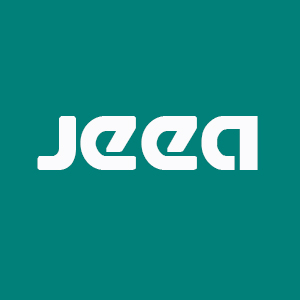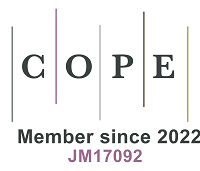REFERENCES
1. WHO (2016) Dioxins and their effects on human health. Available from: https://www.who.int/news-room/fact-sheets/detail/dioxins-and-their-effects-on-human-health [Last accessed on 12 Nov 2021].
2. Loganathan BG, Masunaga S. PCBs, dioxins, and furans: human exposure and health effects. In: Gupta RC, editor. Handbook of toxicology of chemical warfare agents. Elsevier; 2009.
3. Harrad S, Abdallah MA. The environmental behaviour of persistent organic pollutants. In: Harrison RM, editor. Pollution: causes, effects and control. 5th ed. Royal Society of Chemistry; 2014.
4. Secretariat of the Stockholm Convention United Nations Environmental Programme Stockholm Convention Protection of human health and the environment from persistent organic pollutants (2017). Available from: http://chm.pops.int/Implementation/IndustrialPOPs/PCBs/Overview/tabid/273/Default.aspx [Last accessed on 12 Nov 2021].
5. European Food Safety Authority. Opinion of the Scientific Panel on contaminants in the food chain on a request from the Commission related to the presence of Non-Dioxin like polychlorinated biphenyls (PCB) in feed and food. Available from: https://www.efsa.europa.eu/en/efsajournal/pub/284 [Last accessed on 12 Nov 2021].
6. DeMarch BGE, de Wit C, Muir DCG, Braune BM, Gregor DJ. Persistent Organic Pollutants. Artic pollution issues: a state of the artic environmental report. AMAP Assessment Report; 1997.
7. Khairy MA, Luek JL, Dickhut R, Lohmann R. Levels, sources and chemical fate of persistent organic pollutants in the atmosphere and snow along the western Antarctic Peninsula. Environ Pollut 2016;216:304-13.
8. European Commission. Communication from the commission to the council, the European parliament and the Economic and Social Committee Community - strategy for dioxins, furans and polychlorinated biphenyls. Available from: https://www.fsai.ie/uploadedFiles/ECcommunication_dioxins.pdf [Last accessed on 12 Nov 2021].
9. Tlustos C, Anderson W, Flynn A, Pratt I. Exposure of the adult population resident in Ireland to dioxins and PCBs from the diet. Food Addit Contam Part A Chem Anal Control Expo Risk Assess 2014;31:1100-13.
10. Knutsen HK, Alexander J, Barregård L, et al. EFSA Panel on Contaminants in the Food Chain (CONTAM). Risk for animal and human health related to the presence of dioxins and dioxin-like PCBs in feed and food. EFSA J 2018;16:e05333.
11. EFSA. Peer review of a database of relative effect potencies of PCDDs, PCDFs and PCBs and preparing a review of the use of relative effect potencies for derivation of Toxic Equivalency Factors for dioxin-like compounds. Available from: https://www.efsa.europa.eu/en/call/peer-review-database-relative-effect-potencies-pcdds-pcdfs-and-pcbs-and-preparing-review-use [Last accessed on 12 Nov 2021].
12. van Leeuwen FXR, Malisch R. Results of the third round of the WHO-coordinated exposure study on the levels of PCBs, PCDDs and PCDFs in human milk. Organohalogen Compd 2002;56:311-6.
13. World Health Organization. Fourth WHO-coordinated survey of human milk for persistent organic pollutants in cooperation with UNEP. Guidelines for Developing a National Protocol. Available from: https://www.who.int/foodsafety/chem/POPprotocol.pdf [Last accessed on 12 Nov 2021].
14. van den Berg M, Kypke K, Kotz A, et al. WHO/UNEP global surveys of PCDDs, PCDFs, PCBs and DDTs in human milk and benefit-risk evaluation of breastfeeding. Arch Toxicol 2017;91:83-96.
15. Pratt IS, Anderson WA, Crowley D, et al. Polychlorinated dibenzo-p-dioxins (PCDDs), polychlorinated dibenzofurans (PCDFs) and polychlorinated biphenyls (PCBs) in breast milk of first-time Irish mothers: impact of the 2008 dioxin incident in Ireland. Chemosphere 2012;88:865-72.
16. Wemken N, Drage DS, Cellarius C, et al. Emerging and legacy brominated flame retardants in the breast milk of first time Irish mothers suggest positive response to restrictions on use of HBCDD and Penta- and Octa-BDE formulations. Environ Res 2020;180:108805.
17. Abdallah MA, Wemken N, Drage DS, et al. Concentrations of perfluoroalkyl substances in human milk from Ireland: implications for adult and nursing infant exposure. Chemosphere 2020;246:125724.
18. Central Statistics Office. Vital statistics yearly summary. 2018. Available from: https://www.cso.ie/en/releasesandpublications/ep/p-vsys/vitalstatisticsyearlysummary2018/ [Last accessed on 12 Nov 2021].
19. Commission Regulation (EU) 2017/644 of 5 April 2017 laying down methods of sampling and analysis for the control of levels of dioxins, dioxin-like PCBs and non-dioxin-like PCBs in certain foodstuffs and repealing Regulation (EU) No 589/2014 (Text with EEA relevance). Available from: https://eur-lex.europa.eu/legal-content/EN/TXT/PDF/?uri=CELEX:32017R0644&from=PL [Last accessed on 12 Nov 2021].
20. Van den Berg M, Birnbaum LS, Denison M, et al. The 2005 World Health Organization reevaluation of human and Mammalian toxic equivalency factors for dioxins and dioxin-like compounds. Toxicol Sci 2006;93:223-41.
21. Panel on Contaminants in the Food Chain (CONTAM). Scientific Opinion on the presence of dioxins (PCDD/Fs) and dioxin-like PCBs (DL-PCBs) in commercially available foods for infants and young children. EFSA 2012;10:298.
22. Hernández CS, Pardo O, Corpas-Burgos F, et al. BETTERMILK. Biomonitoring of polychlorinated dibenzo-p-dioxins (PCDDs), polychlorinated dibenzofurans (PCDFs) and dioxin-like polychlorinated biphenyls (dl-PCBs) in human milk: Exposure and risk assessment for lactating mothers and breastfed children from Spain. Sci Total Environ 2020;744:140710.
23. Focant JF, Fréry N, Bidondo ML, et al. Levels of polychlorinated dibenzo-p-dioxins, polychlorinated dibenzofurans and polychlorinated biphenyls in human milk from different regions of France. Sci Total Environ 2013;452-453:155-62.
24. Giovannini A, Rivezzi G, Carideo P, et al. Dioxins levels in breast milk of women living in Caserta and Naples: assessment of environmental risk factors. Chemosphere 2014;94:76-84.
25. Schuhmacher M, Mari M, Nadal M, Domingo JL. Concentrations of dioxins and furans in breast milk of women living near a hazardous waste incinerator in Catalonia, Spain. Environ Int 2019;125:334-41.
26. Roberto M, Fabiola F, Valter C, et al. Chemical indicators of exposure to polychlorodibenzo-p-dioxins, polychlorodibenzofurans and polychlorobiphenyls in breast milk samples from mothers residing in Trento, Italy, and neighboring country municipalities. J Environ Sci Health B 2018;53:510-8.
27. Chen MW, Castillo BAA, Lin DY, et al. Levels of PCDD/Fs, PBDEs, and PBDD/Fs in breast milk from Southern Taiwan. Bull Environ Contam Toxicol 2018;100:369-75.
28. Hue NTM, Van Thuong N, Mai PTN, Minh NH. Site-specific bioaccumulation of polychlorinated dibenzo-p-dioxins and polychlorinated dibenzofurans (PCDD/PCDFs) in mothers and their infants living in vicinity of Bien Hoa airbase, Southern Vietnam. Environ Geochem Health 2018;40:2539-49.
29. Ae R, Nakamura Y, Tada H, et al. An 18-year follow-up survey of dioxin levels in human milk in Japan. J Epidemiol 2018;28:300-6.
30. Rawn DFK, Sadler AR, Casey VA, et al. Dioxins/furans and PCBs in Canadian human milk: 2008-2011. Sci Total Environ 2017;595:269-78.
31. Antignac JP, Main KM, Virtanen HE, et al. Country-specific chemical signatures of persistent organic pollutants (POPs) in breast milk of French, Danish and Finnish women. Environ Pollut 2016;218:728-38.
32. Zhang L, Yin S, Li J, Zhao Y, Wu Y. Increase of polychlorinated dibenzo-p-dioxins and dibenzofurans and dioxin-like polychlorinated biphenyls in human milk from China in 2007-2011. Int J Hyg Environ Health 2016;219:843-9.
33. Lu D, Lin Y, Feng C, et al. Levels of polychlorinated dibenzo-p-dioxins/furans (PCDD/Fs) and dioxin-like polychlorinated biphenyls (DL-PCBs) in breast milk in Shanghai, China: a temporal upward trend. Chemosphere 2015;137:14-24.
34. Croes K, Colles A, Koppen G, et al. Determination of PCDD/Fs, PBDD/Fs and dioxin-like PCBs in human milk from mothers residing in the rural areas in Flanders, using the CALUX bioassay and GC-HRMS. Talanta 2013;113:99-105.
35. Wong TW, Wong AH, Nelson EA, Qiu H, Ku SY. Levels of PCDDs, PCDFs, and dioxin-like PCBs in human milk among Hong Kong mothers. Sci Total Environ 2013;463-464:1230-8.
36. Environmental Protection Agency. Ireland’s update of national implementation plan for the Stockholm convention on persistent organic pollutants. Available from: https://www.epa.ie/pubs/reports/waste/haz/IE_NIP-Final-Dec_2018%20_website.pdf [Last accessed on 12 Nov 2021].







